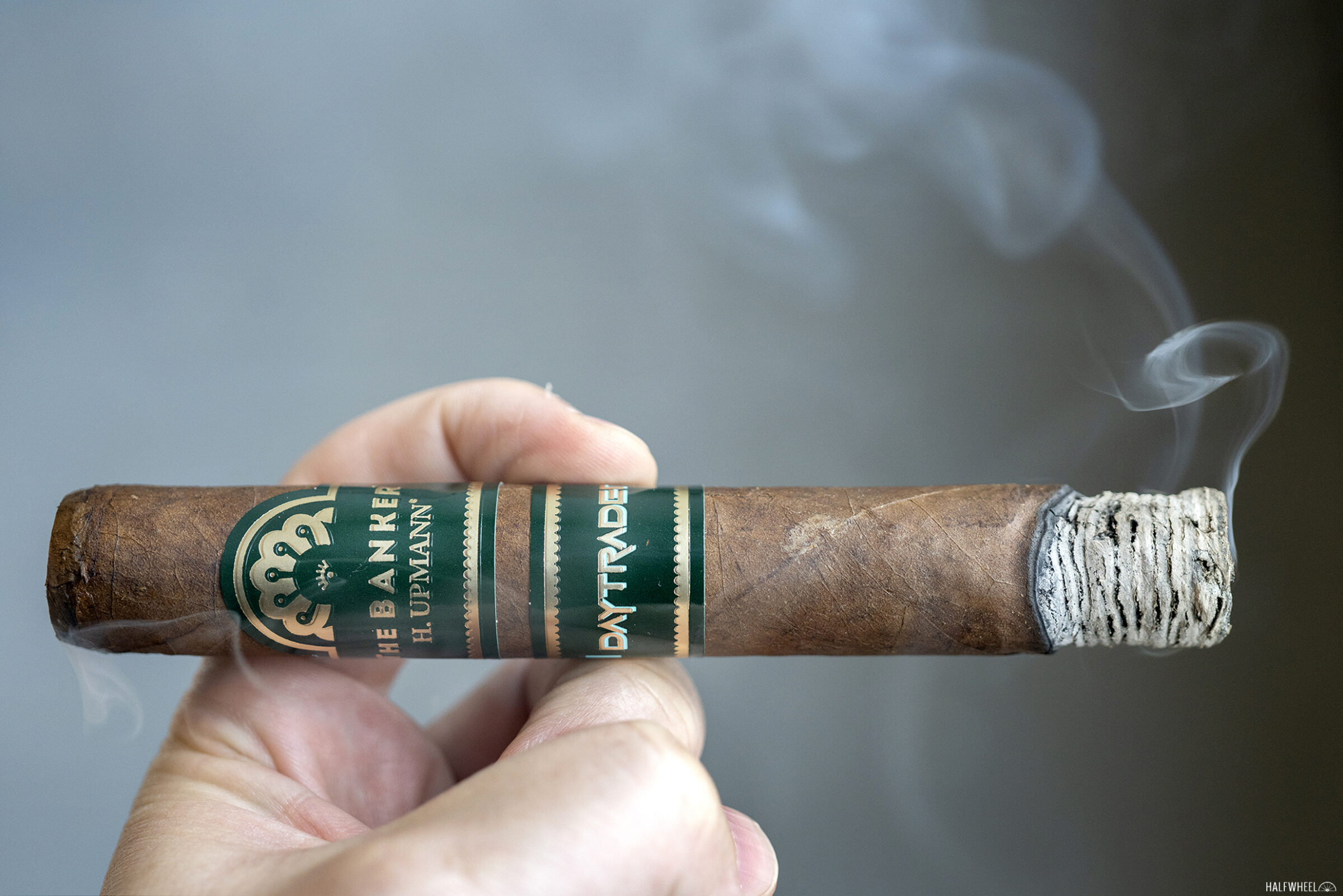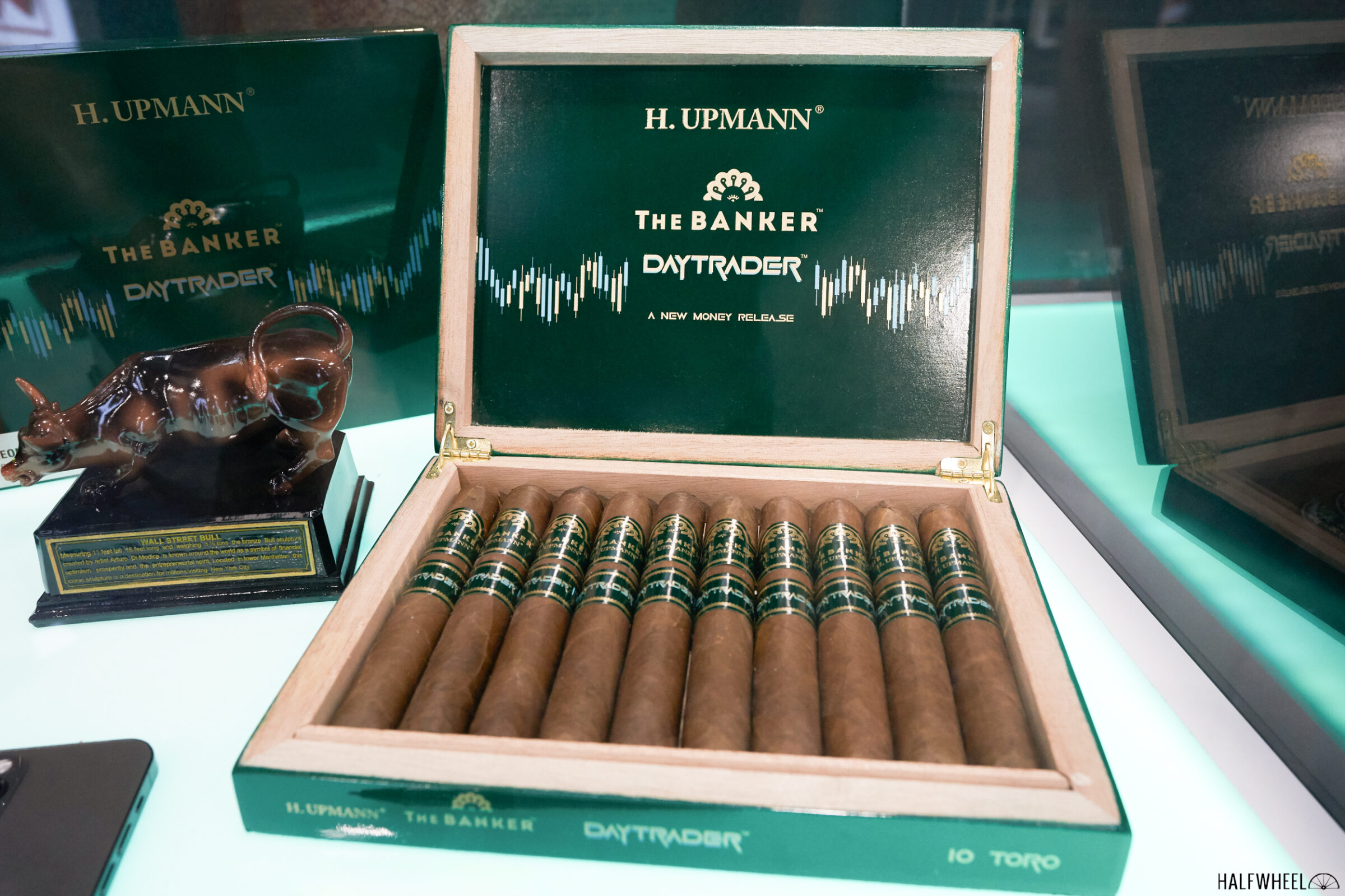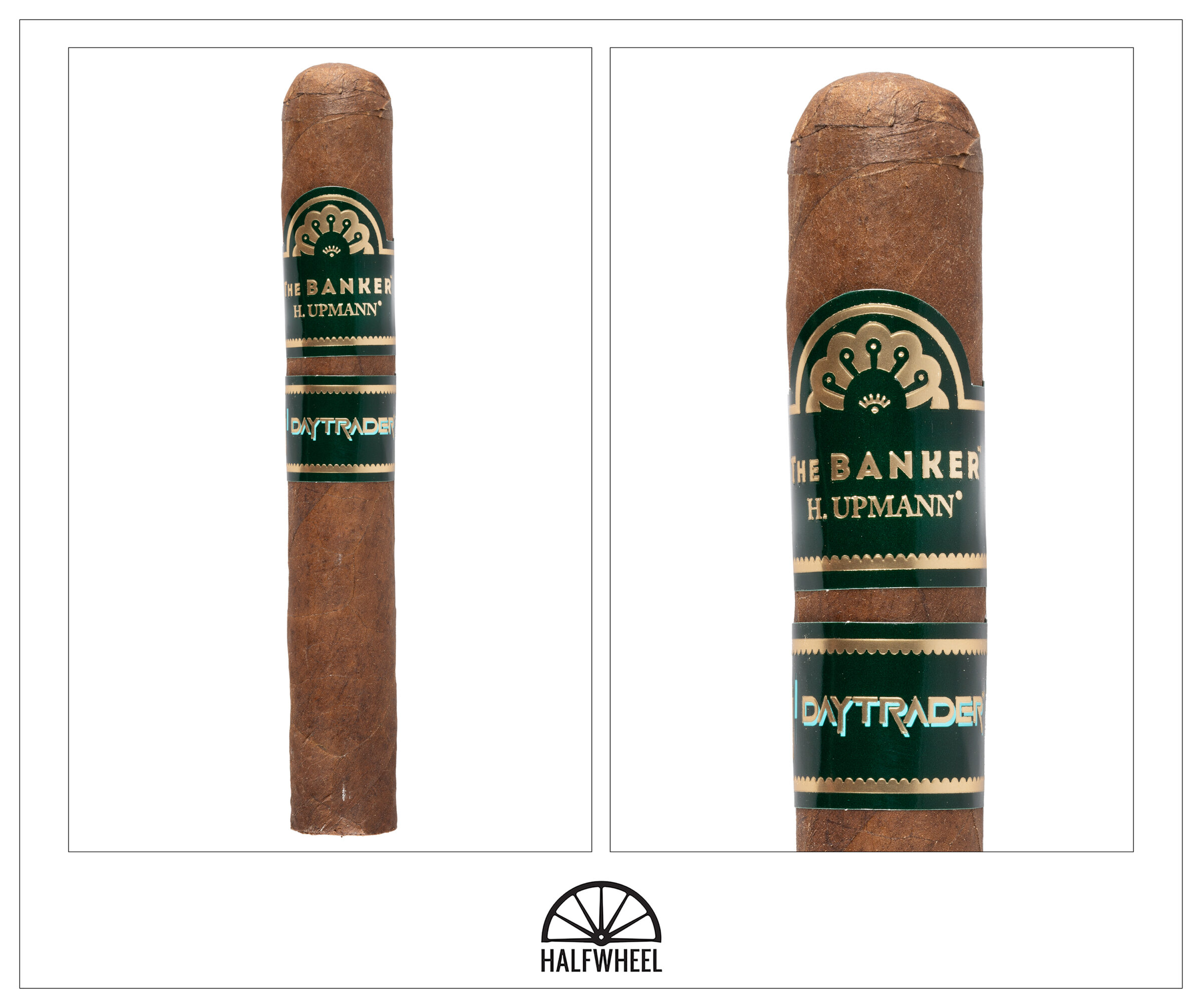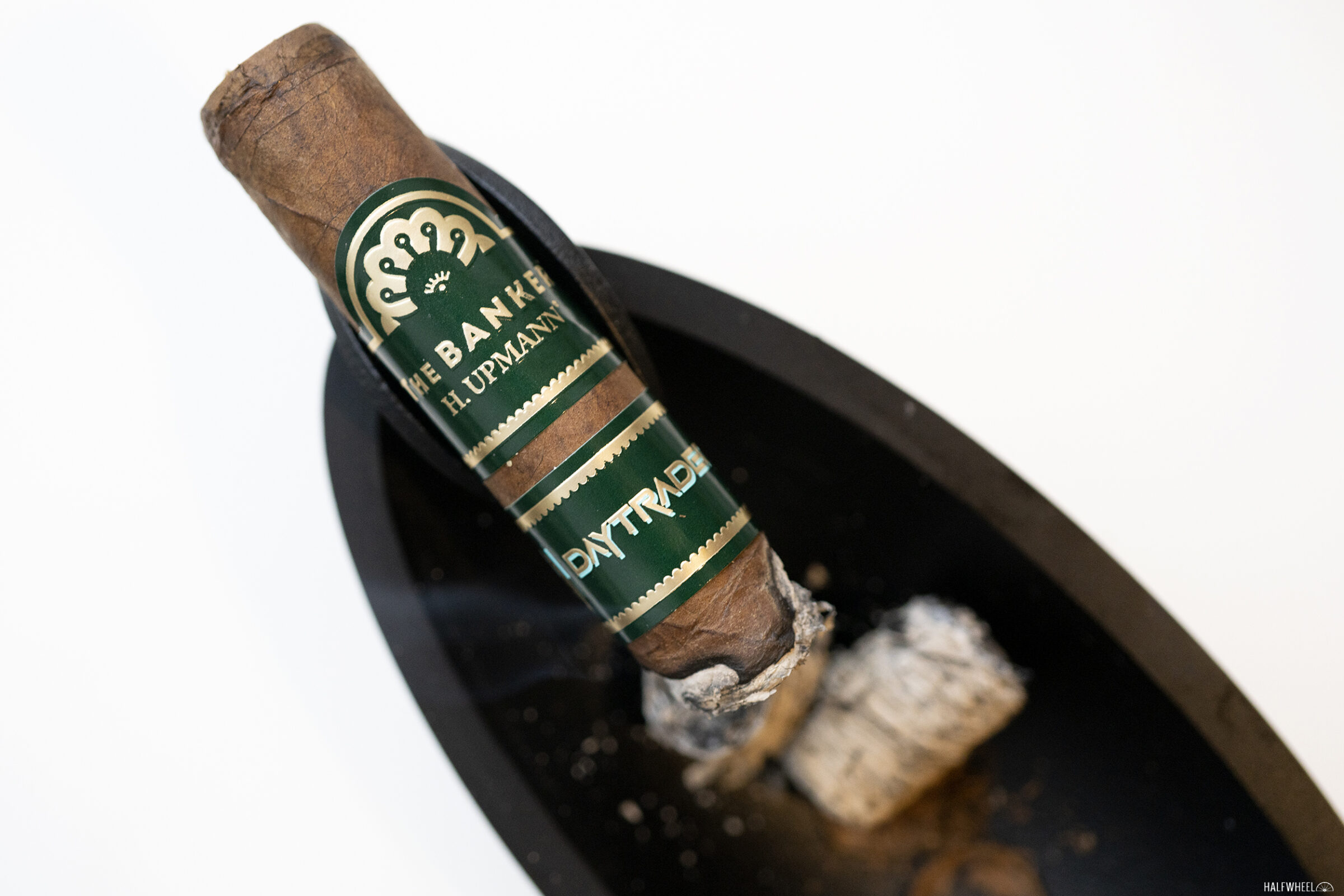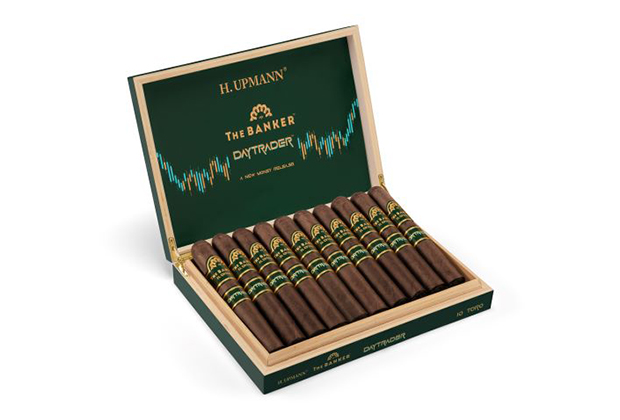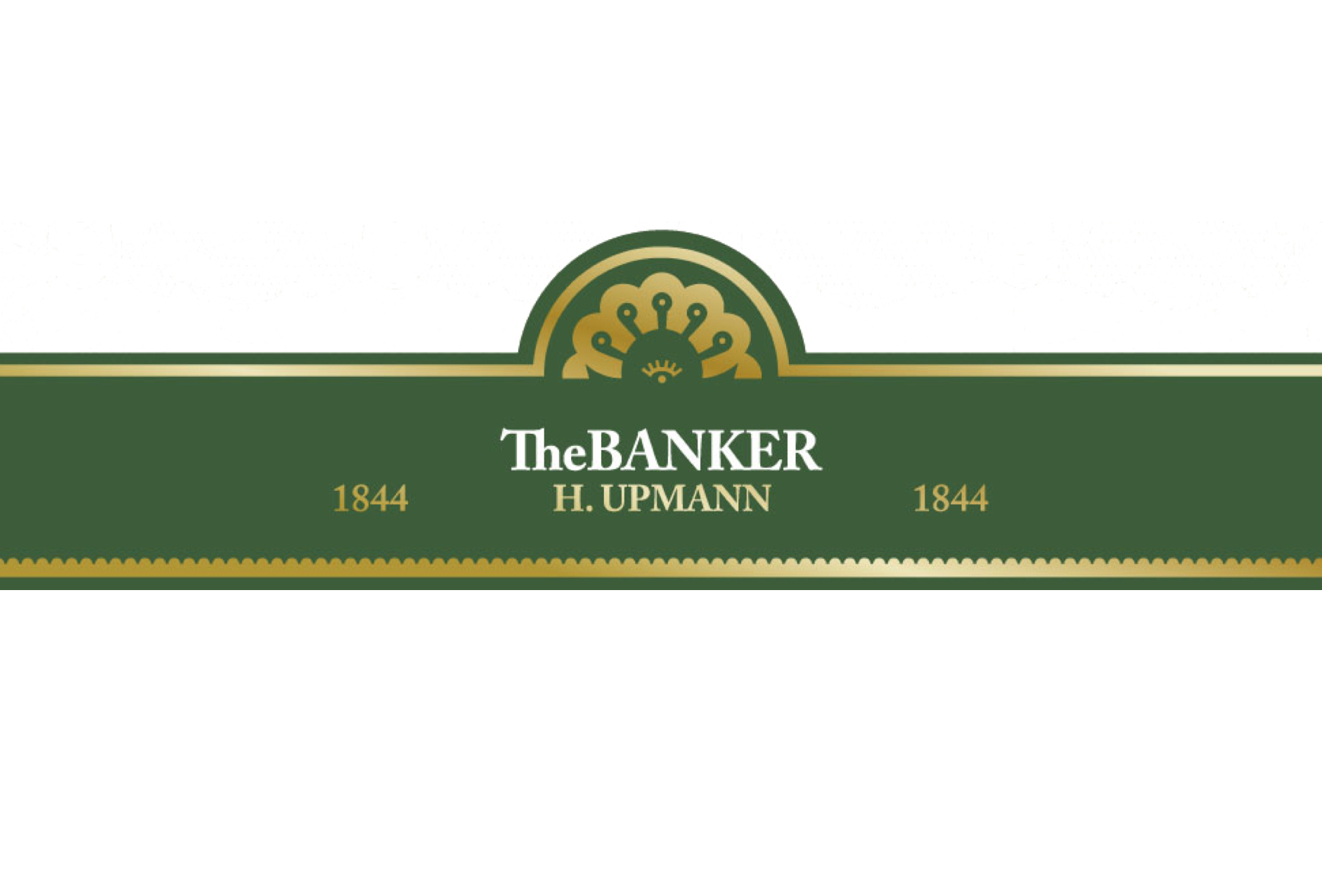At 23, Herman Upmann left his native Germany to work at an import/export company in the New World, eventually landing in Cuba. Shortly after, he purchased a cigar factory in Havana, which not only grew to be one of the largest in the world but also was credited with being the first factory to affix labels to individual cigars, or what we would now call cigar bands. In the 1860s, Upmann and his family established a bank that specialized in the tobacco industry.
While Habanos S.A.—the Cuban cigar conglomerate—has rarely leaned into Upmann’s banking background for its H. Upmann brand, Altadis U.S.A.—which sells the non-Cuban H. Upmann—has regularly used it for the branding of its products. The newest banking-themed H. Upmann is called The Banker Daytrader, an extension to The Banker brand that was introduced in 2014.
The Daytrader uses an Ecuadorian wrapper over a Nicaraguan binder and fillers from the Dominican Republic and Nicaragua. It is produced at Tabacalera de García in La Romana, Dominican Republic.
There are three regular production sizes:
- H. Upmann The Banker Daytrader Robusto (4 1/2 x 54) — $13.49 (Box of 10, $134.90)
- H. Upmann The Banker Daytrader Toro (6 x 54) — $13.85 (Box of 10, $138.50)
- H. Upmann The Banker Daytrader Whale (6 x 60) — $14.19 (Box of 10, $141.90)
“This introduction is part of our plan to expand The Banker line with small productions of specialty cigars from the renowned Grupo De Maestros,” said Jennifer True, senior marketing director of Altadis U.S.A., in a press release when the cigar was announced. “While the world of finance may have changed over time, there’s something that has always remained consistent for H. Upmann, and that is the certainty that being true to innovation means being true to the brand’s DNA.”
- Cigar Reviewed: H. Upmann The Banker Daytrader Toro
- Country of Origin: Dominican Republic
- Factory: Tabacalera de García
- Wrapper: Ecuador
- Binder: Nicaragua
- Filler: Dominican Republic & Nicaragua
- Length: 6 Inches
- Ring Gauge: 54
- Vitola: Toro Extra
- MSRP: $13.85 (Box of 10, $138.50)
- Release Date: April 2023
- Number of Cigars Released: Regular Production
- Number of Cigars Smoked For Review: 3
I can’t say there’s much remarkable with the cigars’ appearances. The tobacco is a medium brown color with a seemingly average amount of veins. If anything is remarkable, the cigars are bumpier than normal, but it all looks quite normal outside of the British racing green bands. The aromas from the wrappers vary between medium and medium-full with scents of paper, pasta, acidity and something that reminds me of a bag of sugar. It’s all pretty mild and outside of the paper—yes, like copy paper—I can’t say there’s much consistency between the cigars. Two of the cigars have remarkably consistent smells from the feet: full smells of sweet cocoa over creaminess, berry sweetness and graham crackers. The third cigar has lots of acidity with bitter grapefruit and a lesser amount of chocolate. Cold draws are all over the place, as one cigar has a plum sweetness and earthiness over sweet lemon and some cocoa. The second cigar is led by a generic fruitiness over some chocolate syrup-like flavor. It’s unique in that there are just two flavors. The third cigar is milder than the other two—around medium-plus—with cereal and pancake batter flavors over some stale bottled water flavors.
This diversity extends to the first puffs of the H. Upmann The Banker Daytrader Toro, which don’t have a ton of similarities. One cigar starts with lots of cedar and oak followed by spicy earthiness, creaminess and toastiness. Another has a weird bitter flavor joined by buttered bread, earthiness and wet leaves. The final cigar has nuttiness over bread, sourness and a unique crispness. As different as the starts are, after about an inch, the cigars generally end up in the same place: earthiness leads sweetness—one cigar presents this as vanilla sweetness—over burnt nuttiness and some bitter flavors. There certainly are some unique aspects to each—one cigar has watermelon, another has some grassy flavors—but the most notable difference is that the first cigar I smoke is nearly 10/10 as far as nicotine. The finish has lots of stale bottled water and earthy flavors, joined by some light roast coast and, occasionally, sourness and metallic flavors. Consecutive retrohales avoid the metallic flavors but add a mineral component to the earthiness. Generally speaking, retrohales are led by nuttiness over mustard powder and some of the coffee flavors. The finish bitters out, though I notice gingerbread flavor emerges. I find the retrohale is much better than the other parts of the profile, probably because it seems more cohesive. Flavor is full, body is full and strength is either medium-full or extremely strong. Construction is impressive, with an even burn and massive smoke production, the latter perhaps due to a slightly open draw.
By the midpoint of the first H. Upmann The Banker Daytrader Toro I smoke, I’m not sure I want to keep smoking as that one cigar is just that strong. Fortunately, the other two cigars are more medium-full than über strong. Additionally, it helps that the flavor profile on all three is pretty enjoyable. Earthiness still leads, but graham crackers, bread and black pepper provide some depth. I’d say it’s slightly more spicy than it is savory, as well as more than it is sour, but it’s hitting each of those sensations. During the finish, the mineral qualities of the earthiness once again pick up, along with some creaminess, generic saltiness, leather and white pepper. Retrohales are toastier, though earthiness still edges out the other flavors: crackers, honey and touches of floral sweetness. The finish is pretty similar, though the cracker flavor turns to more of Lay’s potato chips. Flavor is full, body is full and strength is medium-full on two cigars and dangerously full on the other. All three cigars struggle with combustion at some point and require a touch-up.
During the final third, nuttiness can be as strong as earthiness, the first time any other flavor has challenged the earthiness for the top spot in the main flavor. Secondary flavors include black and white pepper—I’d say the former slightly stronger than the latter—and rum-like sweetness. The finish is similar, though the nuttiness drops out and rice cakes accent the earthiness. Butterscotch sweetness emerges, edging out the minor amounts of bitterness that remain. Retrohales have red pepper accenting earthiness, cinnamon, burnt meats and pita bread. Like the first third, I find the retrohales to be dramatically better than the main flavor, with unique flavors and an added salty sensation that accents everything else. On the finish, there’s earthiness, cinnamon and herbal flavors. Unfortunately, bitterness and sharpness emerge during the finish of the retrohale and tend to drown out the good. Flavor is medium-full, body is full and strength is very full on two cigars and medium-full on the other cigar. All three cigars need at least one touch-up in the final third.
Final Notes
- I had always known that Upmann’s family was involved with the company, but I didn’t realize that Herman Upmann returned to Germany in 1848, just four years after the founding of H. Upmann.
- While Habanos S.A. has avoided using the banking theme for the H. Upmann lines, it hasn’t completely shied away from it. Earlier this year, it auctioned off a humidor that was inspired by the headquarters of H. Upmann & Co., which is now the home of Banco Central de Cuba, the government’s main bank.
- A decade ago, it would have been extremely difficult to imagine a cigar from Altadis U.S.A. being packaged in boxes that say “A NEW MONEY RELEASE” on the inside of the lid. While I still think Altadis U.S.A. is more traditional with its Cuban legacy brands than General Cigar Co., Altadis U.S.A. has made noticeable changes in the last 10 years.
- I don’t think Altadis U.S.A. blended this cigar to be as strong as I found the first cigar to be. It was difficult to smoke it to the final third and required me to lie down for about 15 minutes after I smoked the cigar. While I’ve never engaged in day trading, I imagine that a cigar making you ill would not be good.
- I’m a believer that different cigars can affect people differently. It’s possible that the nicotine content for this cigar was exaggerated in my situation, but this cigar was noticeably stronger than the other two cigars, neither of which were slouches.
- I especially don’t think Altadis U.S.A. wants to make cigars this strong. It’s difficult to sell cigars to the masses when they are making people feel ill.
- The second cigar I smoked was generally medium-full, the third cigar was more full than medium-full.
- Cigars do not lose points on our scoresheet for being too strong or too mild. Strength isn’t considered, though typically, the cigars that are too strong tend to have other issues. In this case, each cigar had multiple issues with combustion at various points. That is something that does cost a cigar points.
- I find the bands to be particularly well-executed. I haven’t seen the boxes up close, but this looks like one of the releases that Altadis U.S.A. did well with the packaging.
- JR Cigar, a sister company to Altadis U.S.A., advertises on halfwheel.
- Final smoking time varied between two hours and 45 minutes and three and a half hours.
- Site sponsors Cigars Direct, Corona Cigar Co., Famous Smoke Shop, Gotham Cigars and JR Cigar carry the H. Upmann The Banker Daytrader Toro.
More and more these days I'm finding myself in situations where one of the three cigars is an outlier in a major way compared to the other two cigars. This time, it's that one cigar was problematically strong, or at least problematically for my body. Unlike the last time I was writing about a cigar being too strong—it was my last review—each of the three H. Upmann The Banker Daytrader Toros I smoked had an enjoyable flavor profile from start to finish. While not perfect, I mostly enjoyed it, with the star being the retrohales. Unfortunately, the strength level of the first cigar makes it difficult for me to recommend this cigar. This would be easier if the other two cigars were similar in strength to one another, but they were most similar in that they weren't as strong as the first cigar.

